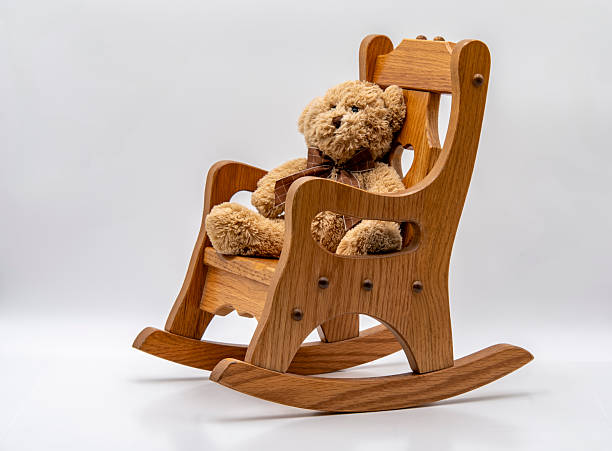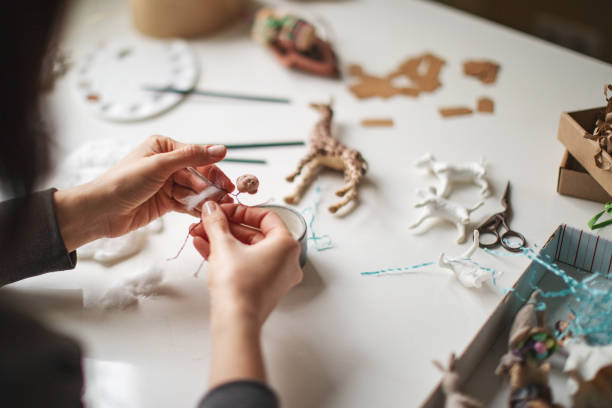The handmade toy industry is experiencing unprecedented growth as parents increasingly seek unique, high-quality alternatives to mass-produced products. Starting a handmade toys business from home offers the perfect opportunity to combine your creative passion with entrepreneurial spirit, all while making a meaningful impact on children’s lives.
Unlike generic store-bought toys, handmade creations offer something special: genuine craftsmanship, sustainable materials, and the personal touch that only comes from artisan-made products. Parents today are willing to invest in toys that provide educational value, use eco-friendly materials, and support local artisans.
This comprehensive guide will walk you through every step of launching your home-based toy business, from initial market research to scaling operations. Whether you’re passionate about wooden puzzles, organic plush animals, or personalized dolls, you’ll discover the practical strategies and insider knowledge needed to transform your crafting hobby into a thriving enterprise.
Market Research and Niche Selection
Identifying Your Target Audience
Success in the handmade toy business begins with understanding your customers. Parents purchasing handmade toys typically value quality over quantity, prioritize safety and sustainability, and appreciate the story behind each product. Your primary customers might include eco-conscious parents, gift-givers seeking unique presents, collectors of artisan-made items, or educational toy enthusiasts.
Consider demographics like income level, parenting style, and values. Affluent parents aged 25-45 often represent the sweet spot for handmade toys, as they have both the disposable income and appreciation for craftsmanship. However, don’t overlook grandparents, who frequently purchase premium toys as gifts, or specialty retailers catering to discerning customers.
Analyzing Your Competition
Research existing handmade toy businesses to understand market gaps and opportunities. Study successful companies like Esther and Erik, known for their wooden toys emphasizing sustainability and educational value, or The Soft Toy Co., which specializes in organic cotton stuffed animals targeting eco-conscious parents.
Examine their product offerings, pricing strategies, marketing approaches, and customer reviews. Look for complaints or unmet needs that your business could address. Perhaps customers want more customization options, faster shipping, or toys for specific age groups that aren’t well-served.
Choosing Your Niche
Your niche should align with your skills, interests, and market demand. Consider specializing in wooden educational toys, organic fabric dolls, personalized keepsakes, or developmental toys for special needs children. Creative Cubby found success focusing on personalized toys with customizable options, appealing directly to gift-givers, while Tiny Tinkers carved out a profitable niche handcrafting miniature dollhouse furniture for collectors.
A well-defined niche helps you target marketing efforts, develop expertise, and justify premium pricing. It’s better to be known as the go-to source for one type of toy than to offer everything without distinction.
Legal and Regulatory Requirements

Understanding Toy Safety Standards
Toy safety regulations are non-negotiable when starting your handmade toys business. In the United States, toys must comply with ASTM F963 standards, while European markets require EN71 certification. These regulations cover everything from small parts and choking hazards to chemical composition and flammability.
Key safety considerations include securing all small parts that could pose choking risks, using non-toxic materials and finishes, ensuring structural integrity through rigorous testing, and providing age-appropriate warnings and instructions. Consider working with a testing facility to verify compliance, especially if you plan to sell through major retailers or international markets.
Business Registration and Licensing
Register your business as a sole proprietorship, LLC, or corporation depending on your needs and risk tolerance. An LLC often provides the best balance of liability protection and tax flexibility for small handmade businesses. Obtain necessary permits and licenses, which may include a general business license, sales tax permit, and home occupation permit if working from your residence.
Research your local zoning laws to ensure home-based toy manufacturing is permitted in your area. Some jurisdictions have restrictions on manufacturing activities or customer visits that could affect your business operations.
Insurance Considerations
Product liability insurance is crucial for toy manufacturers, as it protects against claims related to product defects or injuries. General liability insurance covers other business risks, while property insurance protects your equipment and inventory. Consult with an insurance professional who understands the unique risks of handmade toy businesses.
Creating a Comprehensive Business Plan

Defining Your Business Goals
Establish clear, measurable objectives for your handmade toy business. These might include monthly sales targets, product line expansion goals, or market penetration objectives. Consider both short-term milestones and long-term vision to guide decision-making and measure progress.
Your business goals should address financial targets, production capacity, marketing reach, and personal objectives like work-life balance or creative fulfillment. Having written goals helps maintain focus and provides benchmarks for evaluating success.
Budgeting and Financial Planning
Calculate startup costs including materials, tools, equipment, business registration fees, insurance, and initial marketing expenses. Ongoing expenses include raw materials, packaging, shipping supplies, platform fees, and business services. Create realistic financial projections that account for seasonal fluctuations and growth phases.
Determine how much capital you can invest initially and identify potential funding sources if needed. Many handmade toy businesses start with personal savings and reinvest profits for gradual growth.
Developing Pricing Strategies
Effective pricing balances profitability with market competitiveness. Calculate your cost of goods sold (COGS) including materials, labor, overhead, and packaging. Add your desired profit margin, typically 50-100% for handmade products, then compare with competitor pricing to ensure market viability.
Consider value-based pricing that reflects the unique benefits of your handmade toys: superior quality, eco-friendly materials, educational value, or customization options. Don’t undervalue your time and craftsmanship—customers understand that handmade products command premium prices.
Setting Up Your Workspace
Essential Tools and Equipment
Your tool requirements depend on your chosen niche, but common needs include basic sewing supplies for fabric toys, woodworking tools for wooden toys, craft knives and cutting mats, non-toxic paints and finishes, and safety equipment like dust masks and ventilation fans.
Invest in quality tools that will last and produce professional results. A reliable sewing machine, accurate measuring tools, and proper lighting are fundamental regardless of your specialty. Consider buying used equipment initially to minimize startup costs, upgrading as your business grows.
Organizing Your Production Space
Efficiency matters when working from home. Organize materials and tools for easy access, create dedicated areas for different production stages, ensure adequate lighting and ventilation, and establish storage systems for raw materials and finished products.
Your workspace should be safe, comfortable, and conducive to creativity. Good ergonomics prevent injuries during long crafting sessions, while organization reduces time spent searching for materials and tools.
Crafting High-Quality Toys

Material Selection and Sourcing
Quality materials are fundamental to successful handmade toys. Source organic cotton fabrics, sustainably harvested wood, non-toxic paints and finishes, hypoallergenic stuffing materials, and child-safe hardware like buttons and fasteners.
Develop relationships with reliable suppliers who understand your quality standards and can provide consistent materials. Consider bulk purchasing to reduce costs, but balance inventory investment with storage capacity and cash flow needs.
Design Considerations
Great toy design balances aesthetics, functionality, and safety. Consider age-appropriate features, developmental benefits, durability under normal use, and visual appeal to both children and parents. Incorporate educational elements when possible, as parents increasingly value toys that support learning and development.
Test your designs thoroughly before launching. Have children play with prototypes under supervision, observing how they interact with the toy and identifying potential improvements or safety concerns.
Quality Control Processes
Implement consistent quality control to maintain your reputation and ensure customer satisfaction. Inspect materials upon arrival, check each finished product before packaging, document and address any defects or issues, and continuously refine your production processes.
Create checklists for quality control steps to ensure consistency, especially if you plan to hire help or increase production volume. Consistency builds customer trust and reduces returns or complaints.
Branding and Online Presence
Creating a Memorable Brand Identity
Your brand should reflect your values, appeal to your target audience, and differentiate you from competitors. Develop a cohesive visual identity including logo, color palette, typography, and packaging design. Your brand story should communicate your passion for quality, safety, and creativity.
Consider what makes your toys special: traditional craftsmanship, modern design, educational focus, or environmental consciousness. This unique positioning should permeate all customer touchpoints from product tags to social media posts.
Building Your Online Store
Most handmade toy businesses start on established platforms like Etsy, which provides built-in traffic and trust. Create compelling product listings with high-quality photos, detailed descriptions highlighting features and benefits, clear pricing and shipping information, and authentic customer reviews.
As your business grows, consider launching an independent website using platforms like Shopify or WooCommerce. This provides more control over branding, customer data, and profit margins, though it requires more marketing effort to drive traffic.
Product Photography and Presentation
Professional-looking photos significantly impact sales in the handmade market. Capture products in good natural lighting, show multiple angles and details, include scale references like a child’s hand, and create lifestyle shots showing toys in use.
Invest in basic photography equipment: a good camera or smartphone, simple lighting setup, clean backgrounds, and props that enhance without distracting. Consistent photo style across your product line creates a professional appearance that builds customer confidence.
Marketing and Sales Strategies

Social Media Marketing
Social media platforms offer powerful tools for reaching your target audience. Instagram and Pinterest are particularly effective for visually appealing handmade toys. Share behind-the-scenes content showing your crafting process, feature satisfied customers and their children, provide parenting tips and toy safety information, and engage with followers through comments and direct messages.
Facebook groups focused on parenting, education, or eco-friendly living can provide targeted audiences interested in your products. Share valuable content rather than just promotional posts to build trust and authority.
Content Marketing and SEO
Create valuable content that attracts potential customers while showcasing your expertise. Blog about toy safety tips, developmental play activities, sustainable parenting choices, and the story behind your creations. This content improves search engine visibility while establishing you as a trusted resource for parents.
Optimize your website and product listings for relevant keywords like “handmade wooden toys,” “organic stuffed animals,” or “educational toys for toddlers.” Good SEO helps potential customers find your products when searching for specific toy types.
Participating in Craft Fairs and Markets
Local craft fairs and farmers markets provide valuable opportunities for direct sales, customer feedback, and brand building. Choose events that attract your target demographic, prepare attractive displays that showcase your products effectively, and engage visitors with your story and passion.
Craft fairs also offer networking opportunities with other artisans, potential wholesale customers, and local media. Success at local events can lead to recurring sales and word-of-mouth referrals.
Managing Operations and Finances
Inventory Management
Track raw materials, work-in-progress items, and finished goods to ensure adequate supplies without tying up excessive capital. Simple spreadsheets work initially, but consider inventory management software as your business grows.
Plan production schedules around seasonal demand, lead times for materials, and your available crafting time. Many toy businesses see increased demand during holiday seasons, requiring advance planning and inventory buildup.
Financial Management and Record Keeping
Maintain accurate financial records for tax purposes and business analysis. Track all income and expenses, separate business and personal finances, save receipts and invoices, and consider using accounting software like QuickBooks or FreshBooks.
Monitor key metrics like cost per unit, profit margins, customer acquisition costs, and average order values. These insights help optimize pricing, identify profitable products, and guide business decisions.
Tax Considerations
Understand the tax implications of your home-based business including deductible business expenses, home office deductions, sales tax requirements, and quarterly estimated tax payments for self-employed individuals.
Consult with a tax professional familiar with small businesses to ensure compliance and optimize your tax strategy. Proper record keeping throughout the year makes tax preparation much easier.
Scaling Your Business
Expanding Product Lines
Growth often comes through expanding your product offerings while maintaining quality standards. Consider complementary products that appeal to existing customers, seasonal or holiday-themed items, different size variations of popular products, and custom or personalized options.
Test new products with small batches before committing to full production runs. Customer feedback helps refine designs and identify the most promising additions to your line.
Hiring Help and Outsourcing
As demand grows, you may need additional help with production, marketing, or administrative tasks. Consider hiring part-time assistants for repetitive tasks, outsourcing non-core activities like bookkeeping or photography, or partnering with other artisans for collaborative products.
Maintain quality control when bringing on help by providing clear instructions, implementing training programs, and regularly reviewing work quality. Your reputation depends on consistent standards regardless of who makes the products.
Exploring Wholesale Opportunities
Wholesale relationships with boutique toy stores, gift shops, or specialty retailers can significantly increase your market reach. Develop wholesale pricing that maintains profitability while offering attractive margins to retailers.
Create professional sales materials including product catalogs, wholesale price lists, minimum order requirements, and terms and conditions. Building relationships with retailers takes time but can provide steady, larger orders that stabilize cash flow.
Learning from Success Stories
Several handmade toy businesses demonstrate different paths to success. Esther and Erik built their reputation around wooden toys that emphasize sustainability and educational value, appealing to environmentally conscious parents who prioritize learning through play. Their commitment to quality materials and thoughtful design has created a loyal customer base willing to pay premium prices.
The Soft Toy Co. found success specializing in organic cotton stuffed animals, targeting eco-conscious parents concerned about chemical exposures and environmental impact. Their narrow focus allows deep expertise in organic materials and sustainable production methods.
Creative Cubby differentiates through personalization and customization options, appealing directly to gift-givers seeking unique presents. Their ability to create one-of-a-kind items justifies higher pricing while creating emotional connections with customers.
Tiny Tinkers carved out a profitable niche in miniature dollhouse furniture, building relationships with collectors who value detailed craftsmanship and authentic design. This specialized market supports premium pricing and repeat purchases as customers expand their collections.
FAQHow to Start a Small Handmade Toys Business from Home [2025]
What essential tools and materials are needed for starting a handmade toy business?
Basic tools include sewing machines for fabric toys, woodworking tools for wooden products, and craft knives for general assembly. Essential materials include non-toxic fabrics, sustainably sourced wood, hypoallergenic stuffing, and child-safe paints and finishe
How can I effectively market my handmade toys online?
Utilize social media platforms like Instagram and Pinterest to showcase your products visually. Create an Etsy shop for immediate market access, develop SEO-optimized website content, and participate in online parenting communities and forums where your target audience gathers.
What are some strategies for pricing my products competitively?
Calculate your total costs including materials, labor, and overhead, then add a 50-100% profit margin typical for handmade goods. Research competitor pricing to ensure market viability, and consider value-based pricing that reflects unique benefits like customization or eco-friendly materials.
How do I manage my time and balance crafting with business operations?
Create a structured schedule that allocates specific time blocks for crafting, marketing, administration, and customer service. Set realistic production goals, prioritize high-impact activities, and consider outsourcing tasks like bookkeeping or photography as your business grows.
What steps should I take to ensure my handmade toys are safe for children?
Use only non-toxic, child-safe materials and finishes. Secure all small parts to prevent choking hazards, conduct thorough durability testing, comply with relevant safety standards like ASTM F963, and include appropriate age recommendations and safety warnings with your products.
How do I protect my handmade toy designs from being copied?
Consider registering trademarks for your business name and logos, document your design process with dated sketches and photos, use watermarks on online product images, and focus on building a strong brand identity that’s difficult to replicate.
What are the best practices for shipping handmade toys to customers?
Use sturdy packaging appropriate for the product size and fragility, include tracking and insurance for valuable items, clearly communicate shipping times and policies, and consider offering gift wrapping services for additional revenue.
How do I handle customer complaints or returns?
Establish clear return and refund policies before you start selling. Respond promptly to customer concerns, offer reasonable solutions like refunds or exchanges, and use feedback to improve your products and processes.
What resources are available for learning more about running a handmade toy business?
The Small Business Administration (SBA) offers free resources and counseling, online platforms like Coursera and Udemy provide business courses, local craft organizations offer networking and education opportunities, and industry publications provide market insights and trends.
How do I determine the right target audience for my handmade toys?
Research demographics of parents who value quality and uniqueness over price, analyze competitor customer bases, conduct surveys or interviews with potential customers, and test different marketing messages to see what resonates best with different audience segments.
Building Your Handmade Toy Empire
Starting a handmade toys business from home combines creative passion with entrepreneurial opportunity, offering the chance to make a meaningful impact while building a sustainable income. Success requires balancing your artistic vision with business fundamentals: understanding your market, complying with safety regulations, developing efficient production processes, and building authentic customer relationships.
The handmade toy industry rewards businesses that prioritize quality, safety, and customer satisfaction. Your unique perspective, craftsmanship skills, and dedication to excellence can differentiate your products in a market increasingly hungry for authentic, well-made alternatives to mass-produced toys.
Remember that building a successful business takes time, persistence, and continuous learning. Start with thorough planning, launch with quality products, and grow through customer satisfaction and word-of-mouth referrals. The joy you bring to children through your handcrafted toys makes this entrepreneurial journey uniquely rewarding.
Your handmade toy business has the potential to become more than just a source of income—it can be a legacy of creativity, quality, and positive impact on childhood development. Take that first step today and begin crafting your path to success.
